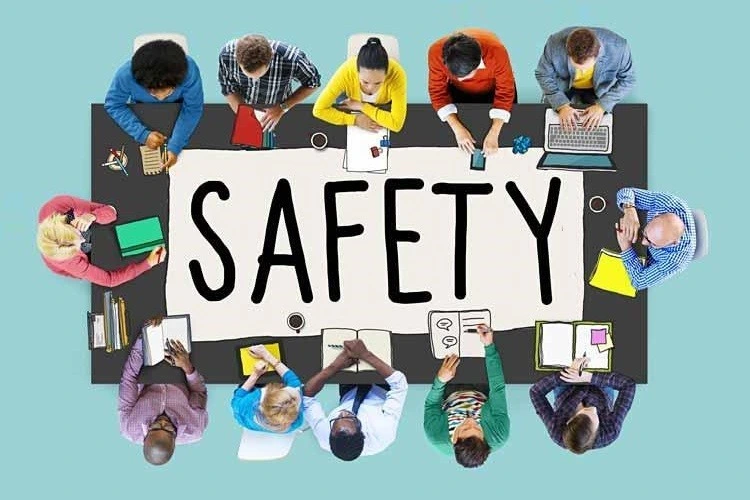In today’s world, ensuring safety on university campuses is of paramount importance. With rising concerns about crime, emergencies, and mental well-being, universities have recognized the need for robust campus safety programs. These initiatives aim to protect students, faculty, and staff while fostering an environment conducive to learning and personal growth. This article explores the various campus safety programs, their importance, and how they contribute to a secure university experience.

The Role of Campus Safety Programs
Campus safety programs serve several crucial functions that enhance the overall educational environment:
- Crime Reduction: Implementing effective safety measures helps deter criminal activities, creating a safer space for the university community.
- Emergency Preparedness: Safety programs equip individuals with the skills and knowledge to respond effectively during emergencies, whether they involve health crises, natural disasters, or security threats.
- Support for Mental Health: A safe campus positively impacts students’ mental health, allowing them to concentrate on their studies and personal development without fear or anxiety.
- Encouragement of Community Engagement: Safety initiatives often promote involvement and communication among students and staff, fostering a sense of belonging and shared responsibility.
Common Types of Campus Safety Programs
Universities implement a wide range of safety programs tailored to their unique needs. Here are some of the most common types:
1. Emergency Response Training
Emergency response training is critical in preparing the campus community for various crises. Key components include:
- First Aid and CPR Certification: Teaching essential life-saving skills that empower students and staff to provide assistance during emergencies.
- Active Shooter Drills: Conducting simulations to prepare individuals for potential active shooter situations, ensuring they know how to respond effectively.
- Fire Safety Education: Informing students and staff about fire hazards and proper evacuation procedures.
2. Crime Prevention Initiatives
Proactive crime prevention strategies help minimize risks and ensure campus safety. These initiatives may include:
- Campus Security Patrols: Employing trained security personnel to monitor campus areas, providing a visible presence that deters criminal activity.
- Safety Escort Programs: Offering safe transportation for students traveling on campus during late hours, reducing the risk of harassment or assault.
- Self-Defense Workshops: Providing training in self-defense techniques, empowering individuals to protect themselves.
3. Awareness and Education Programs
Awareness programs focus on educating the campus community about safety issues and available resources. Initiatives may include:
- Sexual Assault Awareness Campaigns: Educating students about consent, bystander intervention, and resources available for survivors of sexual assault.
- Substance Abuse Prevention: Raising awareness about the dangers of alcohol and drug abuse and promoting healthy lifestyle choices among students.
- Mental Health Resources Awareness: Informing the community about mental health services and support available on campus.
4. Technology-Based Safety Solutions
The integration of technology has led to the development of innovative safety measures, including:
- Campus Safety Applications: Mobile apps that allow students to report incidents, access emergency contacts, and receive real-time alerts about safety issues.
- Surveillance Systems: Installing security cameras and monitoring systems to enhance campus security and deter criminal behavior.
- Emergency Alert Systems: Utilizing texts, emails, and social media to keep the campus community informed about emergencies and safety updates.
5. Collaboration with Local Law Enforcement
Partnerships with local law enforcement agencies enhance campus safety through:
- Regular Communication: Establishing open lines of communication between campus security and local police to share information and resources.
- Joint Training Exercises: Conducting collaborative training exercises to improve response strategies during emergencies.
- Data Sharing and Analysis: Analyzing crime data together to identify trends and develop targeted prevention strategies.
How to Engage with Campus Safety Initiatives
Students and staff can actively contribute to campus safety by:
- Participating in Safety Training: Engaging in workshops, drills, and awareness campaigns to enhance personal safety and community knowledge.
- Reporting Suspicious Activities: Encouraging everyone to report any suspicious behavior or safety concerns to campus security promptly.
- Joining Campus Safety Committees: Becoming involved in committees that focus on developing and improving safety policies and initiatives.
Conclusion
Campus safety programs are essential for creating a secure and supportive learning environment at universities. By implementing comprehensive safety initiatives, institutions can address potential threats, educate their communities, and cultivate a culture of safety and responsibility. As students and staff collaborate to prioritize safety, they contribute to a vibrant and secure campus experience, enabling everyone to thrive academically and personally. Through these efforts, universities can ensure that their campuses remain safe spaces for education and personal growth.